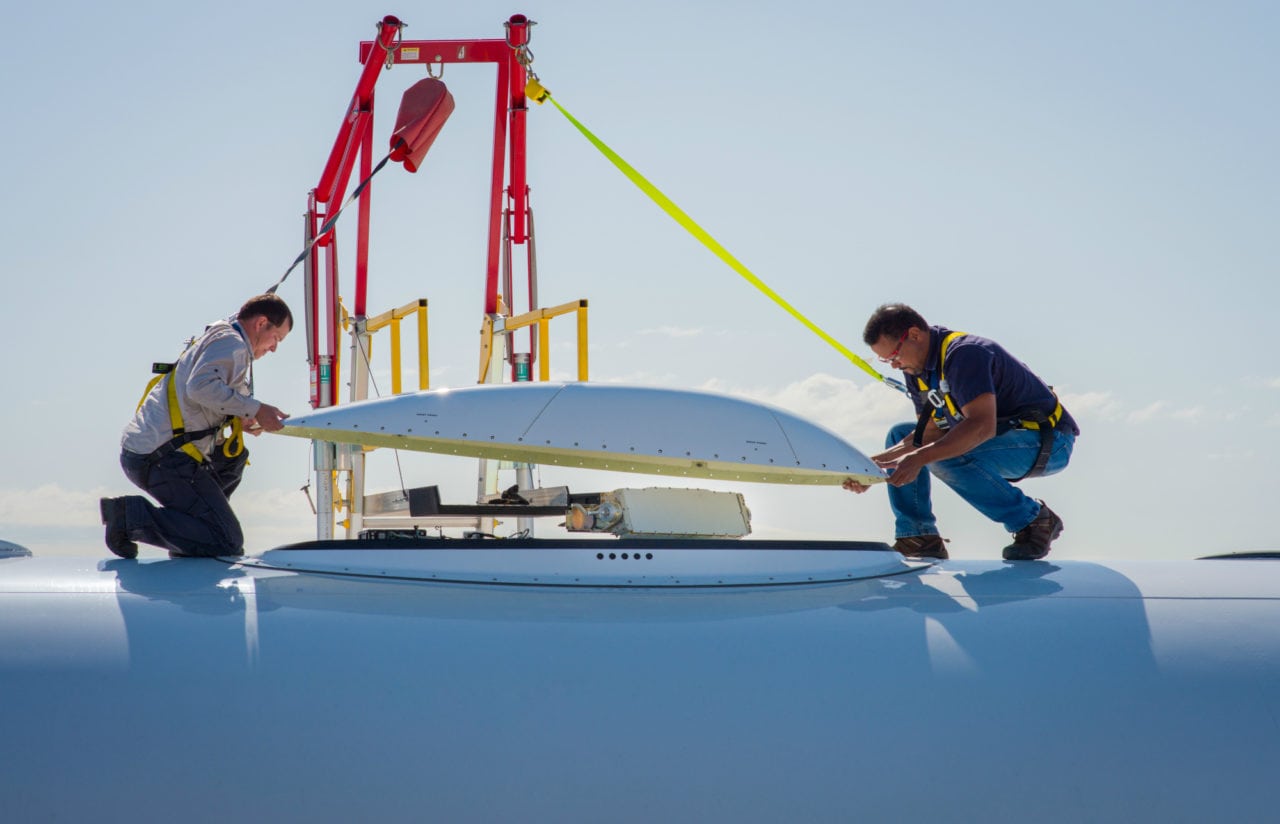
Inmarsat GX installation to provide in-flight broadband. Photo courtesy of Inmarsat
Inmarsat issued its first quarter fiscal year 2018 performance, and the results were a mixed bag. There were encouraging performances in mobility areas, such as maritime and aviation, but weaker results in government.

CEO Rupert Pearce (Photo by Inmarsat)
For example, first quarter maritime revenues reached $142 million, a slight increase compared to the same stage last year. Aviation revenues in the quarter reached $56 million, a near 40% year-over-year (YOY) increase. In government, the operator generated just over $78 million, nearly 10% down from last year. Overall, though, revenues for the quarter grew 5% YOY, to $345 million.
It is clear that Inmarsat believes that aviation is key to its successful future. CEO Rupert Pearce told Via Satellite at the end of last year, “From this diversified position, we can achieve many more shots on goal than we did a decade ago, and aviation passenger connectivity is a classic example of that. It could be a billion-dollar revenue stream for us in a decade or more if we are successful.”
What the Analysts Said
The results seemed to be pretty much in line with expectations and analysts were cautiously optimistic about the future.
“The 1Q18 results had some bright spots (maritime progress, aviation EBITDA, enterprise growth) and some blemishes (government, a difficult VSAT ARPU story), but in the round supports unchanged guidance (and likely, consensus too). It’s not often we’ve been able to say that in the past 18 months (a sentiment that is surely being reflected in the price response),” Giles Thorne, a satellite equity analyst at Jefferies, said in a research note.
He also highlighted the performance in the government sector where there are likely to be some concerns. “The government underperformance was notable (-10% / -14% behind cons revenue / EBITDA) and a rather inevitable function of the limited visibility / lumpy nature of the underlying customer set,” added Thorne.
Thorne noted the fact that the company continues to progress in maritime with YOY growth of 1.6%, which he said represents the third quarter of sequential improvement. “Revenue was +0.6 percent ahead of consensus. A blemish on the solid performance was a deterioration in the VSAT ARPU declines,” he said.
Eric Beaudet, a satellite equity analyst at Natixis Securities, added in a research note that while revenues were up, they were 0.5 percent below consensus expectations. However, he said this result underlined the improving trends with accelerating top-line growth. He also pointed to continued double-digit growth in the IFC division and said that this was the first quarter of significant growth for some time in the enterprise division (11% YOY) which benefited from significant growth in satellite-phone airtime and handset revenues.
Verdict
In SES results last week, it seemed timing was everything and the green shoots of recovery were clear evidence. Further evidence of a big operator turning things around is in Inmarsat’s results. The performance in aviation and maritime are a huge boost, and aviation, in particular, seems on a strong growth curve. However, the performance in government is a worry. Overall, while these results are not bad, there is clearly still room for improvement, and Inmarsat will hope this will lead to a stronger performance this year.
This was originally published on ViaSatellite.